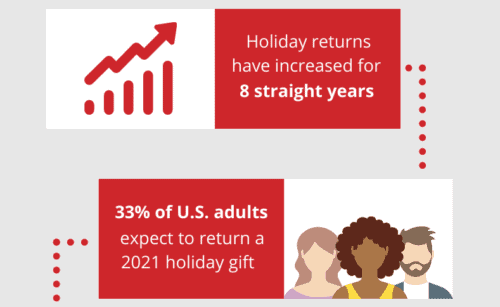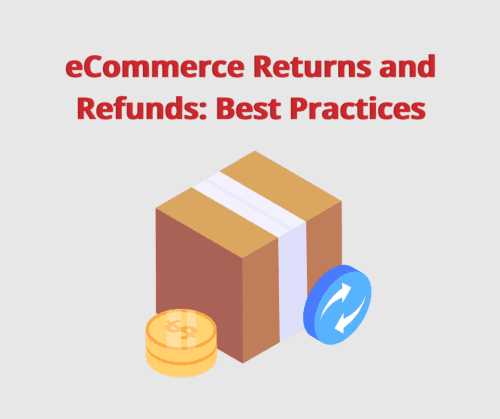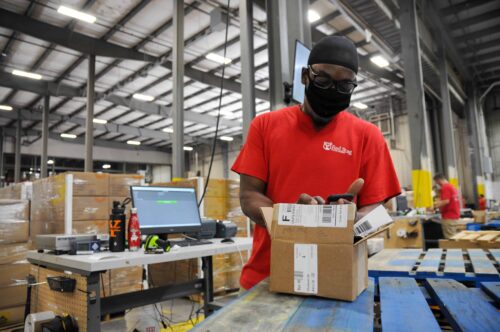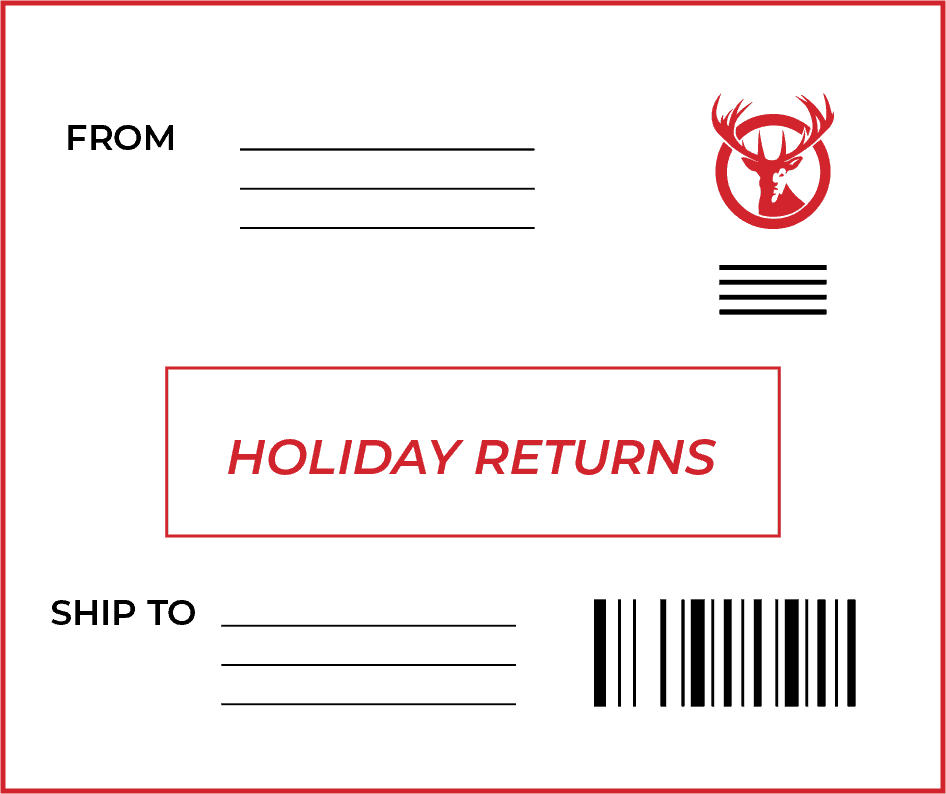
It can be easy to overlook the need to prep for holiday returns in the ongoing packaging and shipping madness. However, with shoppers sending millions of packages back to companies in the coming months, it’s a reality that can sneak up on the unprepared. We recommend that every company starts thinking about prep for holiday returns now so that you’re ready when they begin.
Holiday returns can start in late December and run through late January or even mid-February when the volume is high. That means you’ve got to be ready for increases across a quarter, coming hot on the heels of your best sales volume. Getting it right means you need to prep for holiday returns in a big way. Red Stag Fulfillment is here to help, and offer this guide to discuss:
- Shoppers are spending more online this year
- 42% plan to make at least one return
- Return policies may need an update due to supply chain shifts
- Warehouse processes need to account for more space
- 3PLs are setting aside that space and prep area for you
- Most importantly, tell your partner what you need
- Asking for help gives you the best chance to deliver excellent customer service
Treat holiday returns as an opportunity

The great news about holiday 2021 shopping is that it’s up and expected to keep rising. According to this stat roundup, more than half of every age group expects to significantly increase how much they spend compared to 2020, including 83% of U.S. shoppers spending more during Black Friday and Cyber Monday.
The downside to that spending is that returns scale as people buy more gifts and items. A recent Oracle report has found a few things to consider:
- 42% of U.S. shoppers plan to return at least one gift
- 24% plan to return half of their gifts
- 40% of consumers making a return will do so immediately
- 24% expect to be slower than usual when returning holiday items
- 7% of shoppers say returns were “a nightmare” (up from 3% in 2020)
If you give someone a nightmare experience, 46% say they’ll never shop with you again. That’ll do considerable damage to your reputation and sales capabilities. So, it’s time to prep for holiday returns and to ensure that you’ve got the right processes in place to make it easy and useful. But, before we jump into warehouse operations, here’s a note that some have overlooked due to 2021’s changing landscape.
See our comparison of return policies from major retailers here
A note on standard returns policies
There’s one more considerable risk this holiday season as eCommerce shopping has moved earlier. Many returns may fall outside of your typical return window. Companies like yours often provide 30 days from either shipping or receipt to return a product.
But, what if someone bought your star product in October to ensure holiday delivery? How are you managing holiday returns that fall outside your standard window? A standard policy could frustrate those early shoppers.
Consider offering a gift return date in January or February to help your customers. If you already have that in place, ensure it’s easy to find on your website. Being transparent will reduce customer service requests and help your team have a more manageable workload. This holiday, returns are an area where you need a plan and a generous return policy to keep people happy.
Create a plan. Test that it’ll support your best customers. Put it in place with your team and 3PL partners. Advertise it on your website. And work hard to give everyone a happy holiday season. If you made changes due to pandemic-related returns, check these and ensure things are up to date.
Make sure you have a process in place
Whether you outsource fulfillment or do it yourself, returns need a transparent process. That’s true every day of the year, but especially necessary as you prep for holiday returns. Your entire process will be somewhat unique, but there are core elements that every company needs:
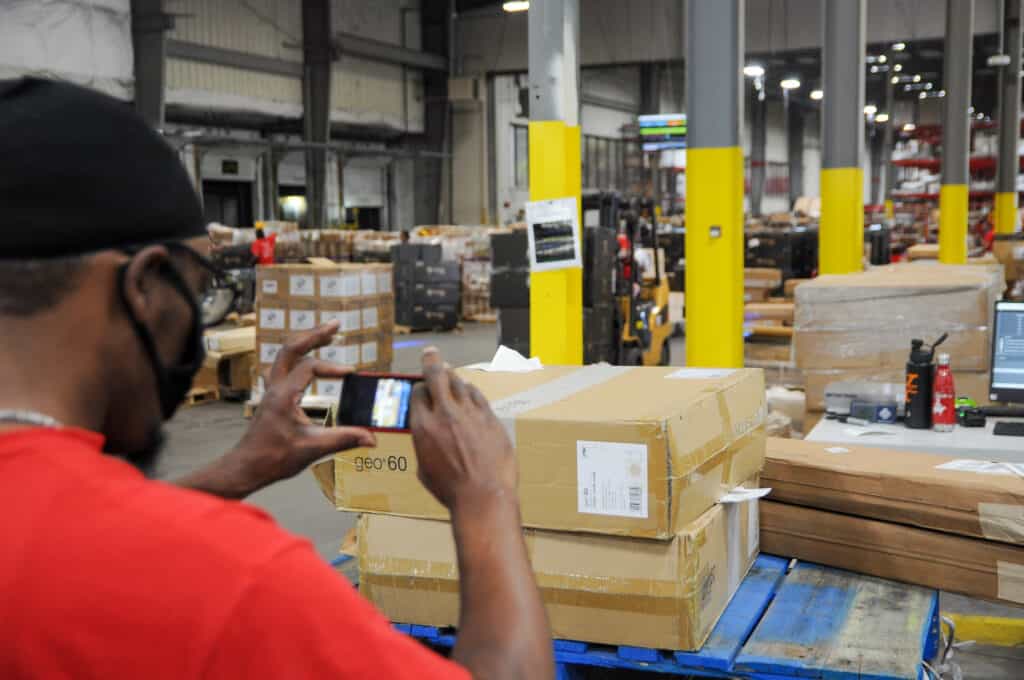
- Clear instructions on what shoppers can and can’t return
- Clear guidelines for how to evaluate returns as acceptable
- Steps to perform to process and count returns
- Software capabilities to track returns and tie them to orders
- Checks to add returned goods back to inventory and update counts
- Training for your team on how to do all the above
Having those in place speeds up the process and enables you to give customers back their money or store credit quickly. That makes it easier for you to capture that spending with an additional sale and improve the customer relationship.
What to tell your 3PL to prep for holiday returns
“The best thing a partner can do for Red Stag and make it easier to support them is to tell us what they want to be done with returns and damages now because over the holiday it’s going to get busy,” said Daniel Stockham, Returns and Damages Department Manager for Red Stag Fulfillment. “For 3PLs like us, where we handle games and stuff for kids, we’re going to be really busy.”
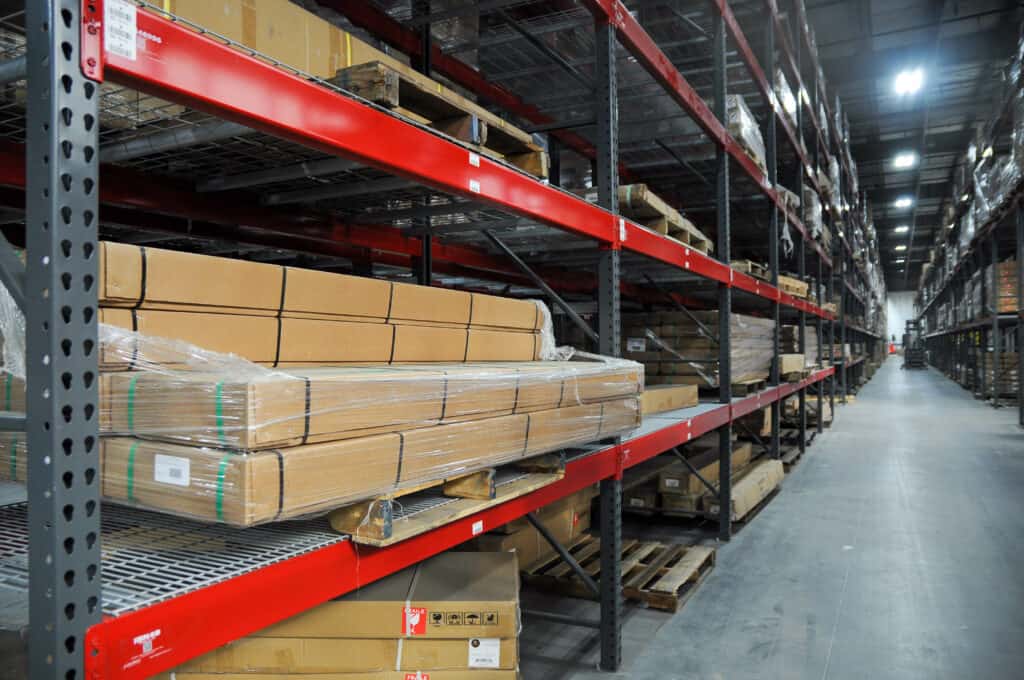
Typically, companies process returns in a few ways:
- Companies provide information on how to evaluate returns
- Undamaged or unopened items can be put back into inventory under the original SKU
- Opened but usable items can get be placed into inventory under a new SKU
- Damaged returns can be tracked and disposed of per company needs
“If a company is okay with those things, that’s great because it’s pretty standard,” said Stockham. “If they want something special done, such as a refurbishment or turning an item into spare parts, we need to know that immediately. These actions are considered ‘special projects’ by 3PLs, and those change how returns are processed.”
Stockham recommends companies reach out to Red Stag or their 3PL as soon as possible just to confirm returns processes. That way, you’re on the same page for standard operating procedures and what teams can do. Plus, if you need a special project, collaborating with your partner now can ensure it happens. Waiting until mid-January to start asking for new SKU designations or refurbishments may require a 3PL to manage such requests after the holiday returns rush is over.
Discover more about turning those seasonal buyers (and returns) into lifelong customers
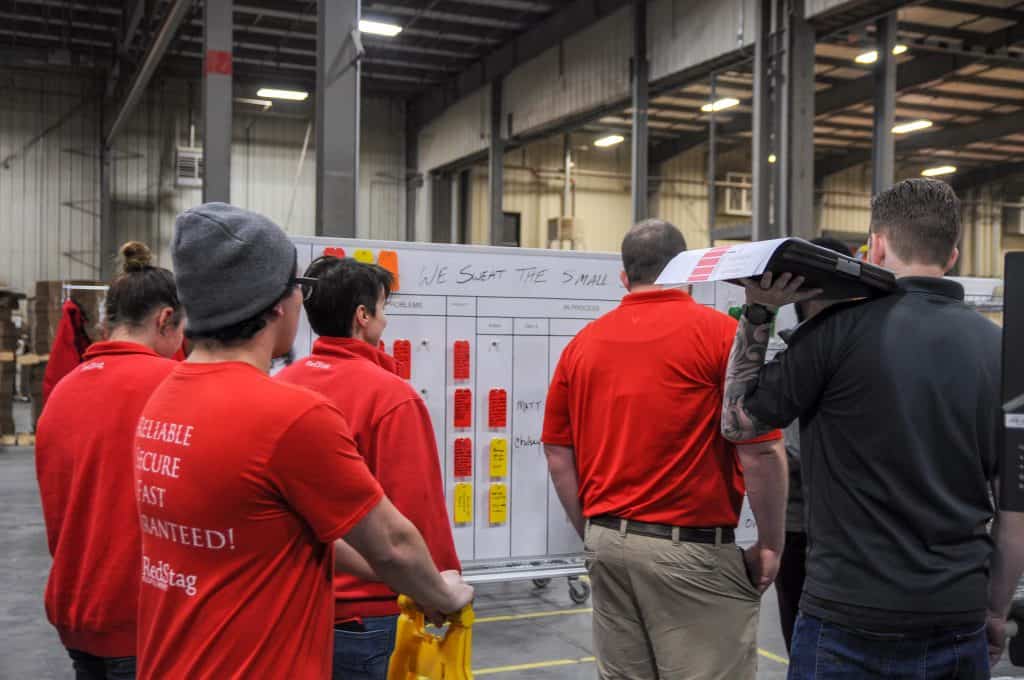
How a 3PL like Red Stag preps for holiday returns
So far, 2021 has been an excellent year for many of Red Stag Fulfillment’s partners. We’ve been expanding our warehouse space to accommodate their growth and plan to open our Sweetwater location in 2022 to provide even more room as partners continue to expand. That room enables us to continue to meet our order processing speed guarantees, and it is also getting special prep for holiday returns.
Red Stag has added more racking near where we receive shipments specifically for returns and damaged products. We’re consolidating the space to give teams more room and have that processing happen in one location. Not moving goods between warehouses before returns processing will help us save time and make it easier to meet partner expectations. For you, that means we update inventory counts quickly, and you can verify customer returns faster, helping keep the experience positive for them.
You can prep for holiday returns and have a great year-end with the proper teamwork. If you’re a current Red Stag partner and are unsure about returns or have questions, reach out directly to your representative. If you want to learn more about our returns processing, 3PL support, or how we’re expecting to have a great holiday just like we did in 2020, click the button below to speak with a Red Stag Expert today.







